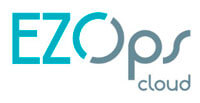Ruby on Rails, often simply referred to as Rails, is a popular open-source web application framework written in the Ruby programming language. Since its release in 2004, Ruby on Rails has gained widespread acclaim for its elegance, simplicity, and focus on productivity. Let’s delve into the key features that make Ruby on Rails a preferred choice for web development.
Convention over Configuration
One of the defining principles of Ruby on Rails is “Convention over Configuration.” This means that the framework makes assumptions about the best way to do things, reducing the need for configuration files and allowing developers to focus on writing actual code. By following a set of conventions, developers can achieve more with less code, resulting in increased productivity and maintainability.
Full-Stack Framework
Ruby on Rails is a full-stack framework, providing tools and libraries for both front-end and back-end development. It comes with everything needed to create a database-driven web application, including an ORM (Object-Relational Mapping) system for interacting with databases, a routing system for handling URLs, and a view templating system for creating user interfaces.
Active Record
At the heart of Ruby on Rails is Active Record, an ORM layer that simplifies the task of interacting with a database. Active Record allows developers to work with database records as objects, eliminating the need to write complex SQL queries. This simplifies data manipulation and makes the codebase more intuitive and easier to maintain.
Scaffolding
Rails provides a powerful feature called scaffolding, which automatically generates a set of the most common elements needed to create a web application. This includes the model, view, and controller files, as well as the necessary database migrations. By using scaffolding, developers can quickly create a prototype or basic version of an application, allowing them to iterate and refine the design rapidly.
Gems and Community
Ruby on Rails has a rich ecosystem of third-party libraries, or “gems,” which provide additional functionality to the framework. These gems cover a wide range of features, from authentication and authorization to payment processing and API integrations. The vibrant Rails community continually develops and maintains these gems, ensuring that developers have access to a wide array of tools and resources.
Security
Security is a top priority in Rails development. The framework incorporates built-in protection against common security threats, such as CSRF (Cross-Site Request Forgery) and SQL injection. Additionally, best practices for secure coding are well-documented, making it easier for developers to write secure applications.
Conclusion
In conclusion, Ruby on Rails offers a powerful and elegant framework for building modern web applications. Its emphasis on convention over configuration, full-stack capabilities, and the wealth of community-contributed gems make it a compelling choice for developers looking to create robust and maintainable web applications with efficiency and ease.
